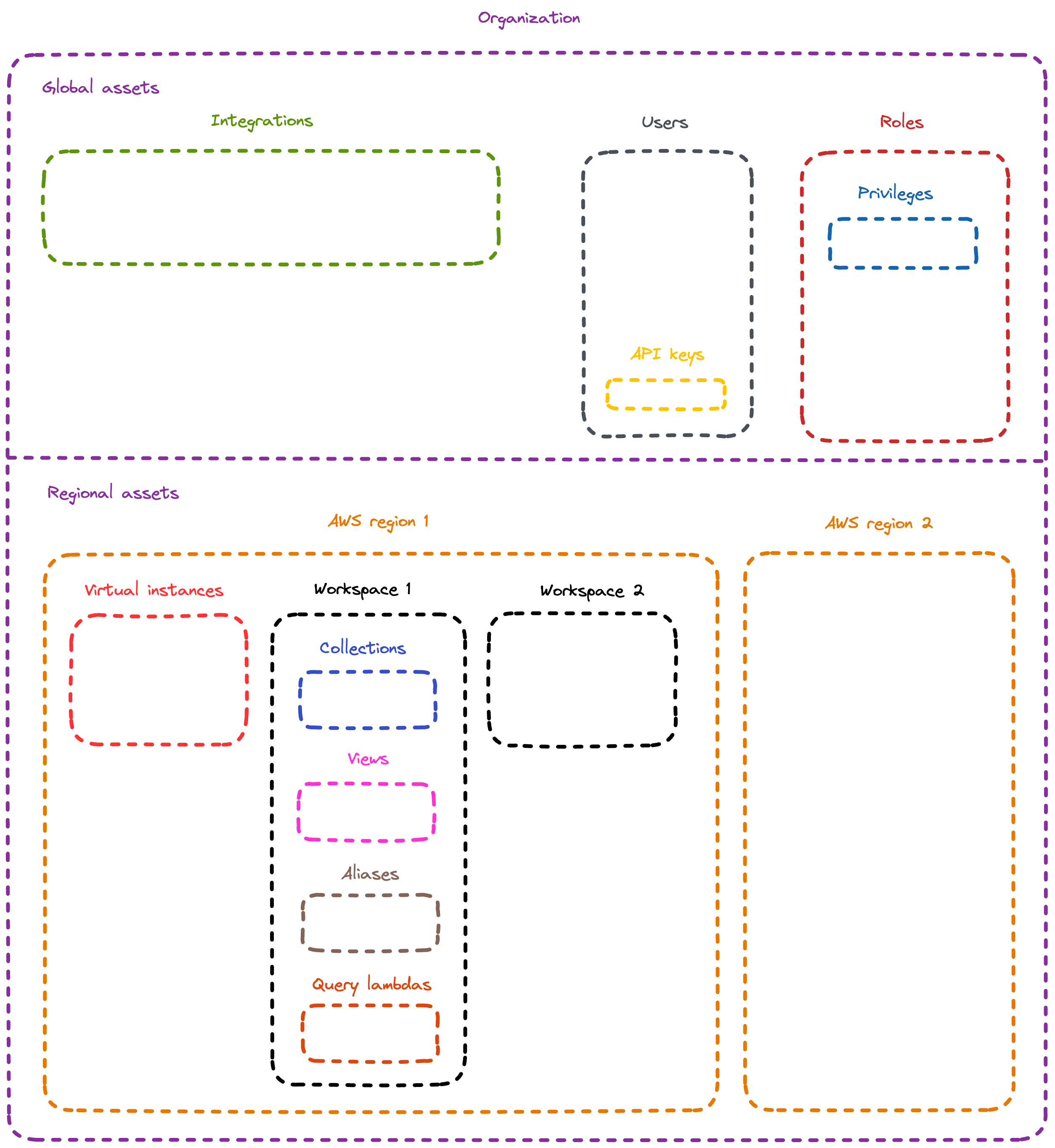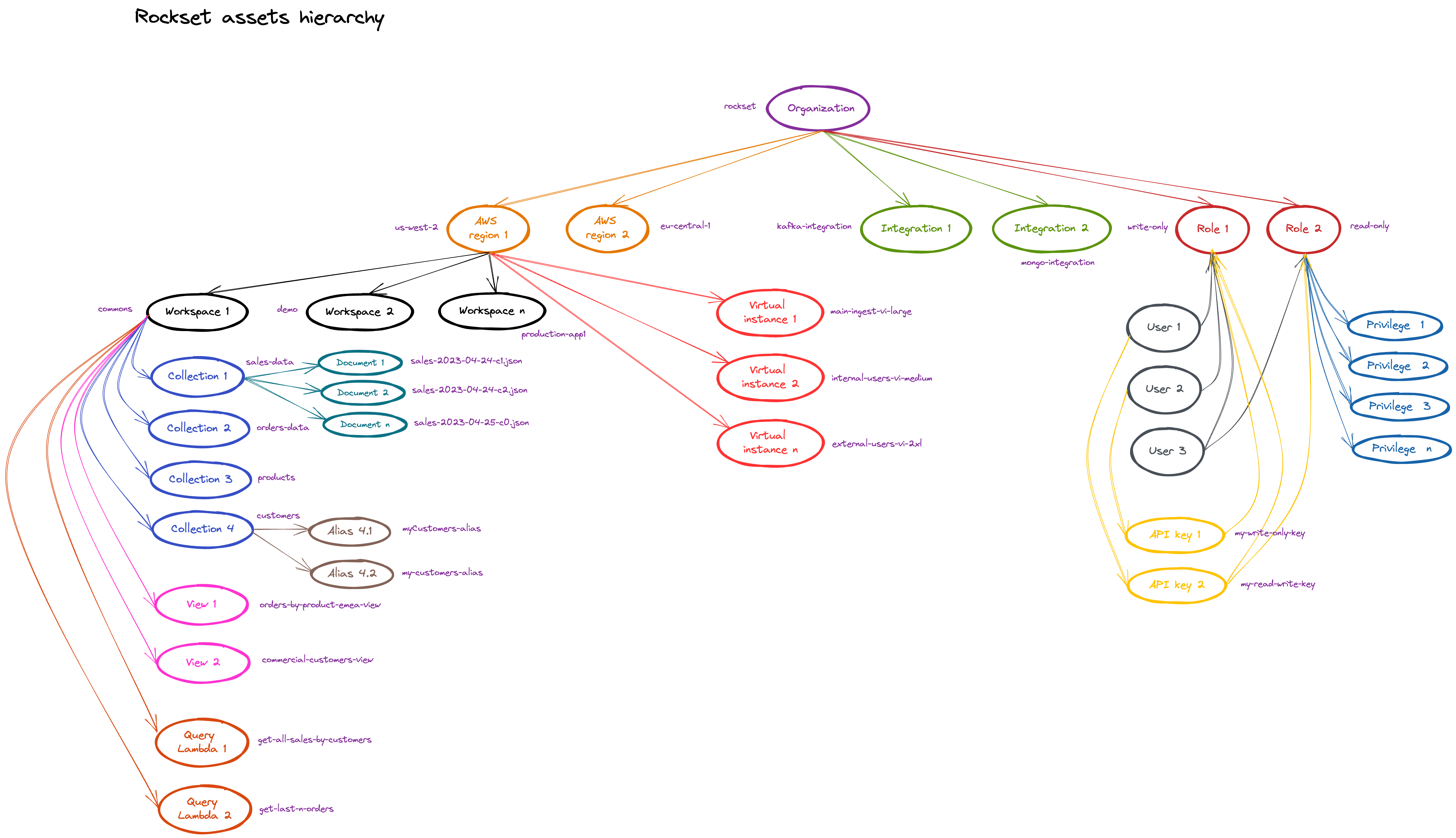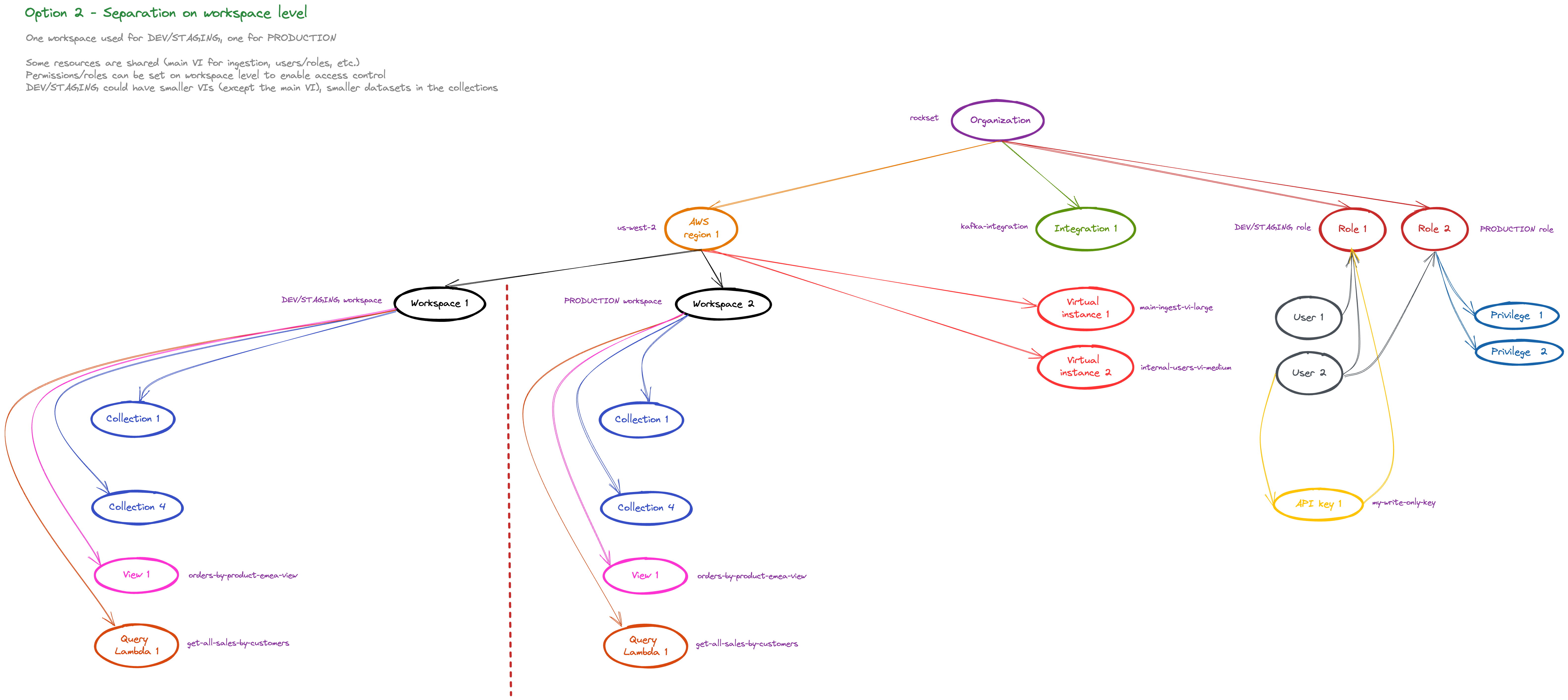Production Readiness
Before productionalizing applications powered by Rockset, it's important to consider a range of crucial factors. We've created a comprehensive checklist that Rockset users can go through to ensure their setup and architecture aligns with Rockset's best practices for production workloads.
General
- Separate development and production environments by using distinct Workspaces or different Rockset accounts (examples of how to do this here).
- Utilize Terraform (and/or Rockset API) for deployment.
Integrations
- Review data source best practices for used Integrations.
- Review and/or clean unused integrations.
Data Management
- Use Workspaces to segregate data access and keep logical separation between different use cases.
- Avoid using the
commonsworkspace.
- Avoid using the
- Use Collection Aliases in queries and Query Lambdas, and avoid referencing Collections directly.
- Add clustering to collections, if relevant.
- Add data retention, if relevant.
- Review Ingest Transformations and remove unnecessary fields.
- Use special fields like
_idand_opto ensure proper handling of data changes, if relevant. - Review and/or clean unused workspaces, collections, Views, and aliases.
Compute Resources
- Use Compute-Compute Separation to have isolated, dedicated Virtual Instances for each use case.
- Use continuous mounts on Query VIs, depending on use case.
- Set-up auto-suspend for Query VIs.
- Set-up auto-scaling for the
IngestVI. - Review Virtual instances classes and sizes to target price/performance for each use case.
- Use dedicated streaming ingest for latency sensitive workloads.
- Use Micro-Batching for workloads that are not sensitive to ingest latency.
- Set-up your Default Query Virtual Instance to execute all queries and query lambdas that don't target a specific VI.
- Review advanced VI configurations, such as concurrency limits (Concurrent Query Execution Limit - CQEL).
Query and API Access
- Perform performance testing to get baseline performance for single queries and multiple concurrent queries.
- Use asynchronous option for long running/batch queries.
- Perform load testing on your system before going to production.
- Learn common query troubleshooting techniques.
- Ensure application logic (if applicable) has client timeout set and retry mechanisms in place with exponential back-off and maximum number of retries (review these configurations in the
Execute SQL queryendpoint andExecute Query Lambdaendpoint of the Rockset API). - Review and/or clean unused Query Lambdas.
Monitoring
- Enable Metrics Endpoint and integrate with Datadog, Grafana, or similar visualization tools.
- Set-up a Query Log collection, preferably in a separate workspace like
logs. - Set-up an Ingest Log collection, preferably in a separate workspace like
logs.
Security and Access Control
- Set-up SSO for Rockset.
- Enforce SSO-only.
- Review and/or clean RBAC roles and user assignment to ensure least privilege access and data segregation.
- Use customer managed encryption keys, if relevant.
- Review and/or clean user list.
- Review and/or clean API keys.
- Set-up a rotation mechanism for API keys.
Networking
- Configure IP allowlisting.
- Configure and enable PrivateLink.
High Availability/Disaster Recovery
- Use single or multi-region deployment to achieve higher levels of availability, if applicable.
- Use collection snapshots to keep a copy of data, if relevant.
- Build an emergency query re-direct to a new VI in case the current VI becomes overwhelmed. Test by building an internal failover and timing how long it takes to switch 100% of queries to a new VI.
Support
- Know how to reach Rockset Support (via chat support and/or support tickets).
- Enable Rockset Support Access by navigating to the Security tab of the Rockset Console.
- Subscribe to the Rockset status page.
- If you have a support contract, run a mock fire drill. File a SEV1 support ticket and time how quickly support acknowledges the ticket.
Billing and Cost Management
- Learn Rockset's billing structure.
- Learn cost management best practices:
- Review and optimize collection sizes by utilizing storage compression, implementing data retention, removing unnecessary fields, and/or removing fields from the search index.
- Use Rollup collections to reduce collection size, if applicable.
- Set auto-suspend for Query VIs to save cost when not used.
- Set auto-scaling for the
IngestVI to save cost under lower usage.
Appendix
Rockset Asset Topology
Mental model on how different assets/components are organized within a Rockset organization:

Rockset Asset Hierarchy
Hierarchical representation of assets/components within Rockset:

Rockset Environment Separation
Separate environments (dev, test, production, etc.) by having multiple Rockset organizations (for example — one for dev/test, one for production) and using workspaces within them to separate use cases. This ensures complete separation of resources and is the recommended way of separating environments.

Separate environments by having a single Rockset organization with workspaces for each environment and use case (for example — dev/test for use case 1, prod for use case 1, dev/test for use case 2, prod for use case 2).

Updated 11 months ago
